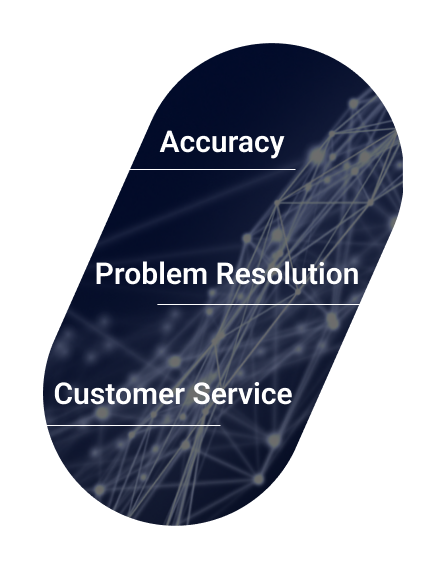
HOW WE HELP OUR CLIENTS IN THIS SECTOR
Space Economy Dynamics
We offer insights into the evolving demand, competition, and innovation trends in the space sector. By capturing the developing satellite technology and key investments, partnerships, and policy shifts, we enable stakeholders to strategically position themselves in a rapidly growing and competitive industry.
- Analyse the market growth drivers in space market.
- Tracking the increasing role of private companies in space, offering insights into market competition and partnerships.
- To study the impact of policies and regulations which help the clients to navigate the legal landscape of space activities.
- Understanding the technology readiness level of various space technologies.
Tracking Adoption Trends in Satellite-Based Earth Observation Technologies
Emerging Opportunities in Earth Observation SolutionsOur analysis revealed a significant surge in demand for advanced crop monitoring solutions, driven by increased global investment in agricultural technology and the growing need for sustainable farming practices. These innovations are enabling more precise, data-driven decision-making for farmers and agribusinesses. At the same time, we identified a rising interest in satellite-based urban heat mapping across Southeast Asia, where rapid urbanization and escalating climate risks are prompting cities to seek smarter, space-enabled tools for climate adaptation and long-term urban planning.
Uncovering Operational Efficiency through Satellite TechnologiesOur analysis unlocked operational efficiency by strategically integrating satellite technologies into the business processes. Our assessments identified opportunities to reduce costs, enhance decision-making, and improve responsiveness by leveraging earth observation data. These interventions not only streamlined day-to-day operations but also enabled proactive risk management and long-term planning. Our insights are equipped with scalable, data-driven solutions tailored to their industry needs that lead to measurable efficiency gains.
Discovering the Global Nanosatellite and Microsatellite Market
Navigating Opportunities in the Miniaturized Space SectorWe partnered with a client, who is a leading aerospace player that was exploring opportunities in the small satellite markets, to deliver a comprehensive market assessment of the nanosatellite and microsatellite sector. We assessed the entire value chain, including spanning across the satellite design, payload integration, launch services, and downstream applications. Our research highlighted a strategic shift toward miniaturized satellite technologies and the expanding availability of commercial launch platforms. These trends are accelerating the development of low-cost, agile, space-based services and reshaping the competitive landscape.
The Rise of Integrated Satellite Networks and Cloud-Enabled AnalyticsOur assessment emphasized the growing importance of integrated satellite networks, particularly those enhanced by next-generation ground station infrastructure and private launch capabilities. A key insight was the strategic value of satellite constellations paired with cloud-enabled analytics, which are becoming essential for delivering real-time, actionable data across industries such as defense, agriculture, logistics, and urban monitoring.
Space Technology
Helping clients in assessing emerging technologies, investment trends, and competitive landscapes, identifying growth areas and potential disruptors. These insights empower stakeholders to make strategic, informed decisions in the fast-evolving space sector.
- Innovation tracking in satellite design, communication and data collection helping clients in understanding the new technologies in this domain.
- Assess developments in propulsion technologies and provide insights into the future of space exploration.
- Identifying the new technological disruption and pinpointing the high-growth areas.
Unlocking Market Potential in the Global Space Electronics Sector
Strategic Insights into High-Impact Space Electronics and Emerging Design TrendsWe examined the high-impact components sector such as the radiation-hardened and radiation-tolerant electronics, ASICs, memory modules, and advanced sensor platforms, which unraveled the key trends, such as the surge in satellite launches, interplanetary exploration programs, and increasing defense spending. We observed a rapid shift toward modular, reconfigurable electronics systems, which are gaining traction due to their adaptability across both low Earth orbit (LEO) constellations and deep space missions. We further analyzed how advancements in miniaturization, the growing prevalence of satellite constellations, and the convergence of commercial and defense applications are reshaping procurement priorities and vendor selection criteria.
Emerging Opportunities in Software-Defined Payloads and Space-Qualified FPGAsOur research highlighted the accelerating shift toward software-defined payloads and onboard processing capabilities, enabling real-time data handling and reducing reliance on ground stations. A specific opportunity lies in the development of space-qualified FPGAs (Field Programmable Gate Arrays), which are now critical for mission agility and in-orbit reconfigurability. These components are gaining traction across both government and commercial missions, offering a balance between performance, flexibility, and cost.
Strategic Advisory and Market Analysis for the Commercial Satellite Imaging Sector
Shifting Toward Subscription-Based Models in the Satellite Imaging MarketWe examined the commercial satellite imaging sector, focusing on its expanding role across defense surveillance, geospatial intelligence, disaster response, and resource management, which revealed a clear shift toward subscription-based imagery-as-a-service models, reflecting the demand for continuous data access, real-time updates, and greater consumption flexibility. We also examined how advancements in resolution, revisit frequency, and cloud-based delivery are reshaping competitive dynamics.
Mapping Opportunities Across the Satellite Imaging SectorWe identified actionable opportunities across both upstream providers and downstream application developers. Emphasis was placed on value chain mapping, pricing evolution, and demand assessments across government and private enterprise use-cases. Our recommendations focused on building platform resilience, unlocking access to new markets, and ensuring compliance readiness in a landscape marked by increasing policy complexity and geopolitical sensitivities.
Market Expansion
We explore the dynamics of expanding markets by analyzing key drivers, emerging sectors, and regional opportunities. Our research identifies high-growth areas and potential challenges, enabling organisations to assess market entry strategies and tailor their offerings to meet evolving demand. By examining industry trends, competitive landscapes, and consumer behaviour, we help businesses strategically position themselves to capture new market share and accelerate growth in expanding regions.
- Looking into government led funding and initiatives that foster the market expansion.
- Tracking cross-industry partnerships that can foster market expansion.
- Assessing the investment flows and funding trends within the technology sectors, identifying the key investments opportunities that drive the market growth.
- Understanding the global market trends to guide businesses in expanding their global footprint.
Exploring Growth and Precision in the Global Atomic Clock Market
Strategic Opportunity in Compact Timing Solutions for LEO Satellite SystemsThrough our market assessment, we identified a strategic opportunity in the growing demand for compact rubidium atomic clocks within satellite navigation systems. This shift is being driven by the increasing deployment of LEO constellations, with specific focus being given on low-power, high-stability timing solutions to enable precise, autonomous operation. We identified how this trend is reshaping procurement preferences and enabling new opportunities in satellite navigation and space-based communications.
Unlocking Market Access Through Innovation and ComplianceOur analysis underscored the rising importance of compact, energy-efficient rubidium and chip-scale atomic clocks (CSACs), particularly as demand accelerates with the expansion of LEO satellite constellations and next-generation navigation systems. These technologies are gaining traction for their ability to deliver high-precision timing in low-power, space-constrained environments. Additionally, we emphasized the role of rigorous qualification standards—such as those set by the European Space Agency (ESA) and U.S. defense agencies—which are increasingly becoming critical differentiators for suppliers aiming to secure aerospace and defense contracts.
Strategic Market Shifts and Partnership-Driven Differentiation in Satellite Data Services Market
Shifting Demand Toward Real-Time Insights and Outcome-Based Service ModelsOur research revealed a surge in demand for near real-time analytics in agriculture and maritime logistics, driven by operational optimization and regulatory compliance needs. Another strategic finding was the increasing preference among government agencies for bundled data and analytics contracts over standalone imagery purchases, reflecting a shift toward outcome-based service models. The growing preference for bundled data-and-analytics contracts among government agencies is fostering longer-term, service-oriented partnerships.
Enabling Targeted Market Positioning and Growth Strategy DevelopmentOur analysis uncovered the competitive advantage of forming strategic alliances with analytics providers to accelerate time-to-market and deliver tailored, value-added solutions in the satellite data services sector. These partnerships allow new entrants to bypass lengthy in-house development cycles by leveraging established analytical capabilities and domain expertise. By embedding application-specific insights—such as crop health indices, vessel tracking intelligence, or infrastructure risk assessments—directly into their offerings, companies can differentiate themselves more effectively, respond to client needs faster, and compete in a market increasingly driven by actionable intelligence over raw data.
Value Chain Analysis
Our value chain analysis for the science and technology sector examines the interconnected stages from research and development to product commercialization. We identify key players, technological innovations, and potential bottlenecks, providing insights into how companies can optimize operations, enhance collaborations, and strengthen their competitive position. This analysis helps businesses align strategies with market demands and emerging trends.
- Assessing the role of R&D and innovation in driving value chain transformation.
- Focus on cost reduction strategies at each stage of the value chain, from production to distribution.
- Evaluate the strength and reliability of supplier and partner networks, identifying potential risks and opportunities.
- Provide insights on how technology integration is changing the dynamics of value chain.
Optimizing the Particle Size Market Value Chain Through System Innovation
Evolving Demand for Hybrid Systems and Data-Driven Service Models in Particle AnalysisOur assessment revealed the increasing demand for integrated particle size and shape analysis systems that combine multiple measurement techniques (e.g., laser diffraction, dynamic light scattering, and image analysis). These hybrid solutions are gaining traction in R&D and quality control environments, where accuracy, repeatability, and compliance with global standards (e.g., FDA, ISO) are paramount. We also observed the growing role of cloud-based data platforms and real-time analytics that enabled remote diagnostics and process optimization, particularly in large-scale manufacturing setups which are creating opportunities for vendors to move beyond hardware sales into lifecycle-based service models.
Unlocking Value Through Automation and System IntegrationOur value chain evaluation highlighted the rising demand for automated, user-friendly systems that reduce operator dependency and improve throughput in industrial quality control. Additionally, we observed growing interest in integrated workflow solutions, where particle size instruments are paired with complementary lab technologies, creating opportunities for vendors to differentiate through bundled offerings and end-to-end workflow optimization.
Shifting Value Chain Dynamics in the Microtome Market
Value Chain Advancements Driving Automation and Integration in the Microtome MarketOur assessment mapped key stages, including component manufacturing, assembly, distribution, software integration, service support, and end-user applications in clinical pathology, life sciences research, and materials analysis that revealed the increasing demand for automated microtome systems with enhanced precision and digital connectivity, particularly among high-throughput pathology labs. These systems are reducing technician workload while improving consistency and turnaround times. Additionally, we observed growing interest in bundled solutions, where microtomes are paired with digital slide scanners and image analysis software, enabling vendors to move up the value chain by offering integrated histopathology platforms.
Enhancing Downstream Value Through Safety and Modularity in MicrotomesWe uncovered the rising demand for low-maintenance rotary microtomes equipped with safety features, driven by regulatory emphasis on workplace ergonomics and operator safety. We also identified growing differentiation through proprietary blade systems and modular accessories, allowing manufacturers to capture greater value downstream. These trends are prompting a shift toward modular product designs and service-led offerings, especially in diagnostic labs prioritizing efficiency, compliance, and long-term cost optimization.
Market Insights
Insights that foster growth and research that drives revolution for your business. Our collaboration is all we need to dive into the immense possibilities of your business.
Consumer Insights
The most appropriate strategies for you to get comprehensive insights right into your target market.
Competitive Benchmarking
Get the most elaborate analysis of your competitors to get the competitive edge.
MI 360
Get quick access to comprehensive market insights with clarity (insight-heavy) and brevity (not text-heavy)!
Business Plans
Get fool-proof business plans backed with rigorous research, extensive evaluation, and accurate analysis.
Our Core Performance Metrics
When it comes to delivery, the quality of your projects is non-negotiable. We ensure we don’t have any room left for a subpar quality.

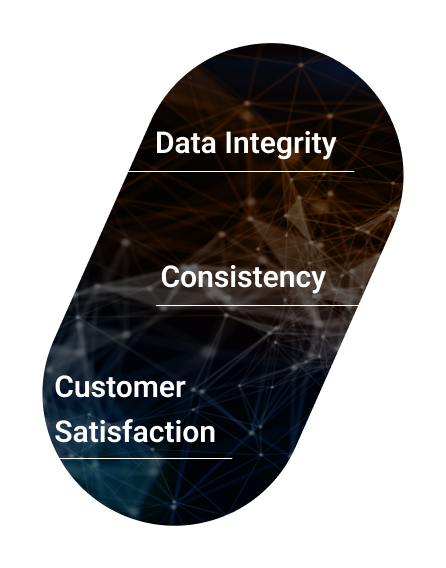

Strategic Solutions for Informed Decision-Making
Track prices with detailed trend reports.
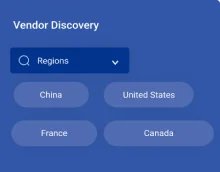
Analyse trade data for supply chain insights.
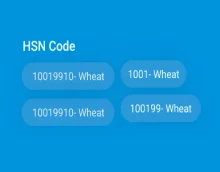
Leverage cost reports for smart savings

Enhance supply chain with partnerships.
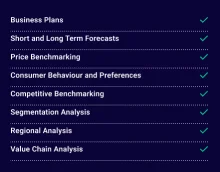
Gain insights to stay ahead and seize opportunities.
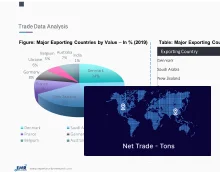
Get insights & trends for a competitive edge.
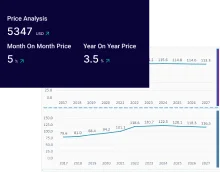
Track prices with detailed trend reports.

Analyse trade data for supply chain insights.

Leverage cost reports for smart savings

Enhance supply chain with partnerships.

Gain insights to stay ahead and seize opportunities.

Get insights & trends for a competitive edge.

Track prices with detailed trend reports.

Analyse trade data for supply chain insights.

- Our Insights Store:
-
Industry Statistics

-
Procurement Insights

-
Consumer Insights

Our Offices
Australia
63 Fiona Drive, Tamworth, NSW
+61-448-061-727
India
C130 Sector 2 Noida, Uttar Pradesh 201301
+91-723-689-1189
Philippines
40th Floor, PBCom Tower, 6795 Ayala Avenue Cor V.A Rufino St. Makati City,1226.
+63-287-899-028, +63-967-048-3306
United Kingdom
6 Gardner Place, Becketts Close, Feltham TW14 0BX, Greater London
+44-753-713-2163
United States
30 North Gould Street, Sheridan, WY 82801
+1-415-325-5166
Vietnam
193/26/4 St.no.6, Ward Binh Hung Hoa, Binh Tan District, Ho Chi Minh City
+84-865-399-124
United States (Head Office)
30 North Gould Street, Sheridan, WY 82801
+1-415-325-5166
Australia
63 Fiona Drive, Tamworth, NSW
+61-448-061-727
India
C130 Sector 2 Noida, Uttar Pradesh 201301
+91-723-689-1189
Philippines
40th Floor, PBCom Tower, 6795 Ayala Avenue Cor V.A Rufino St. Makati City, 1226.
+63-287-899-028, +63-967-048-3306
United Kingdom
6 Gardner Place, Becketts Close, Feltham TW14 0BX, Greater London
+44-753-713-2163
Vietnam
193/26/4 St.no.6, Ward Binh Hung Hoa, Binh Tan District, Ho Chi Minh City
+84-865-399-124

